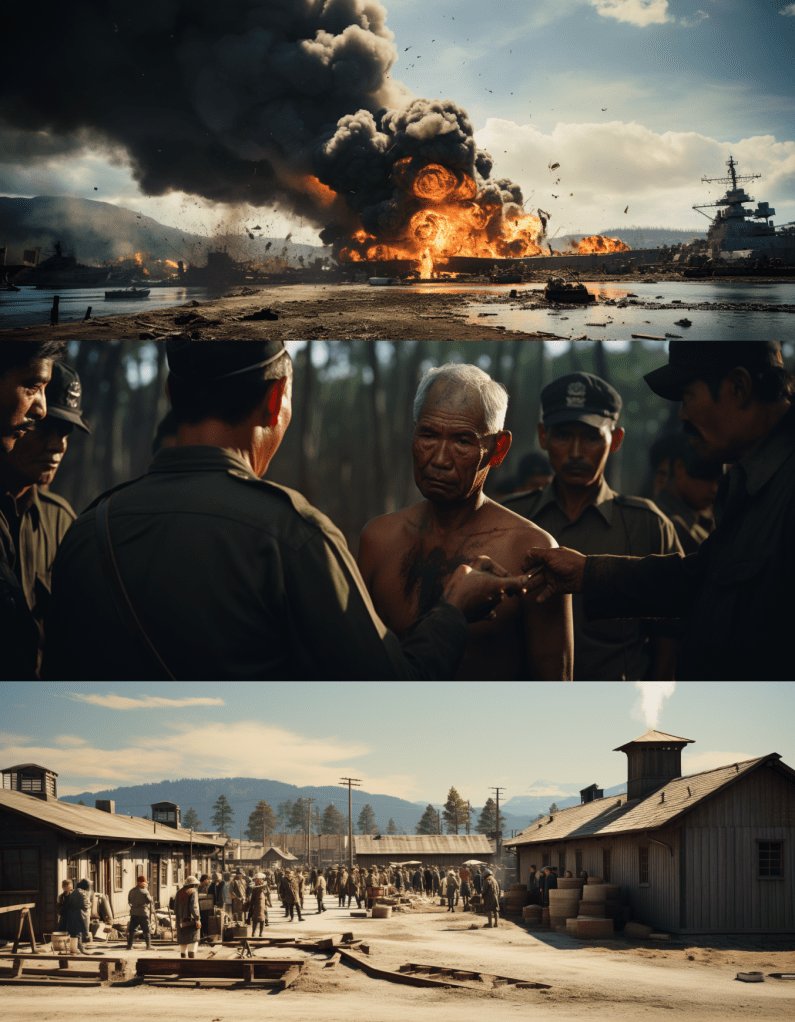On This Day Dec 7, 1941 at 7:55 a.m. Hawaii time, a Japanese dive bomber appeared out of the clouds above the island of Oahu. A swarm of almost 360 Japanese warplanes followed, descending on the U.S. naval base at Pearl Harbor in a ferocious assault. The surprise attack struck a critical blow against the U.S. Pacific fleet killing nearly 2,500 Americans and drew the United States irrevocably into World War II.
The attack had a profound impact on the Hawaiian people, both during and after World War II.
Here are some of the effects of the Pearl Harbor attack on Hawaii:
Martial law: My Father-in-Law and Mother-in-Law remembered this vividly (RIP). Immediately after the attack, Hawaii was placed under martial law, which lasted for almost three years. This meant that the civilian government was suspended and the military took over all aspects of life in the islands. Every person on the island, with the exception of children, was fingerprinted and issued identification papers they had to produce on demand. Civilians were banned from photographing any coastal location. Curfews, blackouts, censorship, rationing, and travel restrictions were imposed. Many civil rights and liberties were suspended or violated, such as freedom of speech, press, assembly, and religion. The military courts tried thousands of civilians for minor offenses, often without due process or legal representation.
Japanese internment: People of Japanese ancestry faced hasty judgments and harsh treatment after the attack on Pearl Harbor. While they were forced into concentration camps on the mainland, they were treated differently in the Hawaiian territory. Hawaii’s Japanese population accounted for almost 37% of the island’s total population, and many of them were vital to the economy and society. Therefore, the military authorities decided not to relocate or detain all of them, but only those who were considered suspicious or dangerous. However, this process was often arbitrary and unfair, and about 2,000 Japanese Americans in Hawaii were interned in camps on the islands or on the mainland. They faced discrimination, loss of property, separation from family, and psychological trauma.
USO services: The attack on Pearl Harbor also marked an important moment in USO history. The USO was a newly formed organization that aimed to provide morale and recreational services to the military personnel and their families. Prior to the attack, the USO in Hawaii was mostly run by volunteers and local organizations, who offered home entertainment, dances, tours, and entertainment programs. After the attack, the USO expanded its services and facilities to meet the growing needs of the military population in Hawaii. The USO opened new centers, clubs, and canteens, and organized more events, shows, and activities. The USO also provided comfort and support to the wounded, the bereaved, and the survivors of the attack.
Environmental damage: The attack on Pearl Harbor also caused significant environmental damage to the islands, both in the short and long term. The attack resulted in oil spills, fires, debris, and sunken ships that polluted the harbor and the surrounding waters. The military buildup and expansion that followed the attack also had negative impacts on the environment, such as deforestation, erosion, habitat loss, and waste disposal. The water in the community surrounding Pearl Harbor is contaminated with more waste than 99 percent of the country, according to the Environmental Protection Agency. That has many advocates raising environmental justice concerns, especially as the state has the 13th highest poverty rate in the country, with the largest share of the burden falling on Native Hawaiians.
Image prompt: HISTORICAL prompt by @timetravelr2025 – https://x.com/timetravelr2025/status/1688234471030394880
